The simplest way to solve this problem is to interpolate from one mesh onto the other one. Such an approach works well when one is more highly resolved than the other, or when you're not as concerned with results at individual nodes, but rather the overall pattern across elements. If that's not the case, then you have a very complicated problem because you need to create a polygonal surface that fully captures all nodes and edges of both triangulations. Consider the following pair of triangular patterns:

A surface that captured all the variations would need to have all the vertices and edges that make up both of them, which is not a purely triangular surface. So, let us instead assume the easier case. To map results from one triangulation to the other, you simply need to formulate functions that define how the values vary along the triangles, which are more broadly called basis functions. It is often assumed that values betweeen the nodes (i.e. vertices) of the triangles vary linearly along the surfaces of the triangles. You can do it differently if you want, it just requires defining new basis functions. If we go for linear functions, then the equations in 2D are pretty simple. Let's say you make an array trimap that has which triangle each of the vertices of the other triangulation is inside of. This can be accomplished using the info here. Then, we set the coordinates of the vertices of the current triangle to (x1,y1), (x2,y2), and (x3,y3), and then do the math:
for cnt1=1,npoints
x1=x(tri1(trimap(cnt1),1));
x2=x(tri1(trimap(cnt1),2));
x3=x(tri1(trimap(cnt1),3));
y1=y(tri1(trimap(cnt1),1));
y2=y(tri1(trimap(cnt1),2));
y3=y(tri1(trimap(cnt1),3));
delta=x2*y3+x1*y2+x3*y1-x2*y1-x1*y3-x3*y2;
delta1=(x2*y3-x3*y2+xstat(cnt1)*(y2-y3)+ystat(cnt1)*(x3-x2));
delta2=(x3*y1-x1*y3+xstat(cnt1)*(y3-y1)+ystat(cnt1)*(x1-x3));
delta3=(x1*y2-x2*y1+xstat(cnt1)*(y1-y2)+ystat(cnt1)*(x2-x1));
weights(cnt1,1)=delta1/delta;
weights(cnt1,2)=delta2/delta;
weights(cnt1,3)=delta3/delta;
z1=z(tri1(trimap(cnt1),1));
z2=z(tri1(trimap(cnt1),2));
z3=z(tri1(trimap(cnt1),3));
valinterp(cnt1)=sum(weights(cnt1,:).*[z1,z2,z3]);
end
valinterp is the interpolated value for each point. Here and here are some nice slides explaining the mathematics behind all this. Note that I've not tested any of this code. Note also that you will need to do something to assign to values outside of the triangulation. Perhaps a null value, or an inverse-distance weighted value.
